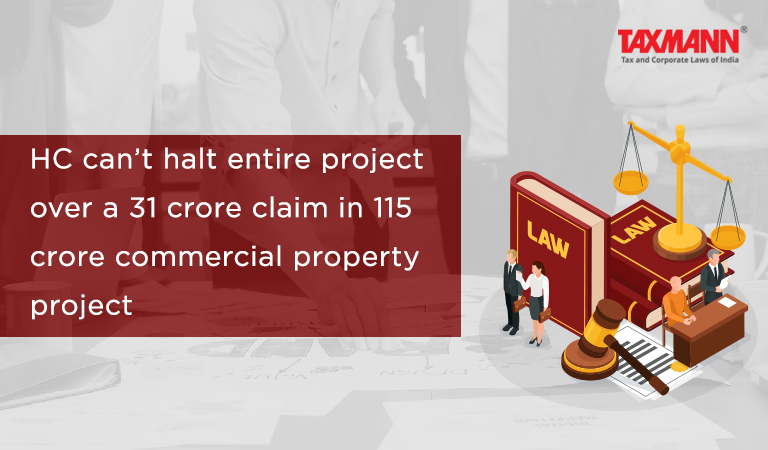HC can’t halt entire project over a 31 crore claim in 115 crore commercial property project
- Blog|News|Company Law|
- 2 Min Read
- By Taxmann
- |
- Last Updated on 31 January, 2023
Case Details: Developer Group India (P.) Ltd. v. Surinder Singh Marwah - [2023] 146 taxmann.com 477 (SC)
Judiciary and Counsel Details
-
- B.R. Gavai & Vikram Nath, JJ.
Facts of the Case
In the present case, respondents Nos. 1 and 2 decided to invest in a commercial project on the representation of one of the directors of respondent No.3 Company. The project, however, ran into trouble and the construction was stalled. Neither the possession was offered nor was the assured return or the interest thereon given to respondent Nos. 1 and 2.
The respondent Nos. 1 and 2 filed a winding up petition before the High Court against respondent No. 3 Company. Later, vide order of the High Court, respondent No. 3 Company went into liquidation. Consequently, through various charge sheets and FIRs, it was also alleged that huge sums of money were diverted, defalcated and siphoned off from the corpus of respondent No. 3 Company.
The appellant herein was a 100% FDI Company. A development and management agreement was entered into between the appellant herein and a consortium of six land-owning companies, for exclusive developmental rights over 11 properties. Neither the appellant nor the consortium of six land-owning companies were originally parties to the winding up proceedings.
The Respondent Nos. 1 and 2, based on the strength of the aforesaid charge sheet, preferred an application in the winding up proceedings to injunct the consortium of six companies from transferring, selling or alienating the 11 properties.
It was alleged that the respondent No. 3 Company had siphoned off the monies to four intermediate companies, who, in turn, further transferred the money to the consortium of six land owning companies. These six land-owning companies were, allegedly, related party Companies of respondent No. 3.
The learned Single Judge of the High Court by interim order restrained the transfer, selling or alienating of 11 properties purchased by a consortium of six landowning companies. Aggrieved by the same, the appellant preferred applications for vacation of the interim orders.
Supreme Court Held
The Hon’ble Supreme Court observed that while passing an order of injunction, the Courts are required to be guided by the principles of prima facie case, the balance of convenience and irreparable injury.
The Apex Court was of the opinion that if the Division Bench of the High Court found that, there was a prima facie case in favour of the respondent Nos. 1 and 2, they could have passed an appropriate order to protect the interests of the said respondents rather than stalling the entire project.
Disclaimer: The content/information published on the website is only for general information of the user and shall not be construed as legal advice. While the Taxmann has exercised reasonable efforts to ensure the veracity of information/content published, Taxmann shall be under no liability in any manner whatsoever for incorrect information, if any.

Taxmann Publications has a dedicated in-house Research & Editorial Team. This team consists of a team of Chartered Accountants, Company Secretaries, and Lawyers. This team works under the guidance and supervision of editor-in-chief Mr Rakesh Bhargava.
The Research and Editorial Team is responsible for developing reliable and accurate content for the readers. The team follows the six-sigma approach to achieve the benchmark of zero error in its publications and research platforms. The team ensures that the following publication guidelines are thoroughly followed while developing the content:
- The statutory material is obtained only from the authorized and reliable sources
- All the latest developments in the judicial and legislative fields are covered
- Prepare the analytical write-ups on current, controversial, and important issues to help the readers to understand the concept and its implications
- Every content published by Taxmann is complete, accurate and lucid
- All evidence-based statements are supported with proper reference to Section, Circular No., Notification No. or citations
- The golden rules of grammar, style and consistency are thoroughly followed
- Font and size that’s easy to read and remain consistent across all imprint and digital publications are applied





 CA | CS | CMA
CA | CS | CMA


